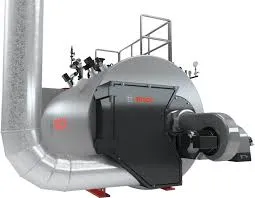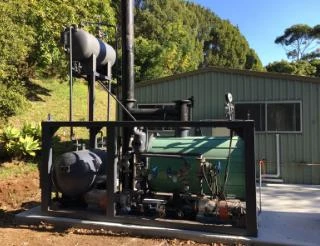High-Efficiency Waste Heat Recovery Boiler Expert Service & Quotes
- Introduction to caldera de calor residual
- Understanding the Mechanism and Technological Advantages
- Market Manufacturers and Service Providers Analysis
- Comparative Table of Leading Manufacturers
- Customized Solutions: From Quotations to Integration
- Real-world Application Case Studies
- Summary and Future Outlook for caldera de calor residual

(caldera de calor residual)
Introduction to caldera de calor residual
The demand for sustainable energy solutions has elevated the prominence of the caldera de calor residual, commonly known as the waste heat recovery boiler. Driven by global initiatives to enhance energy efficiency across industrial operations, this technology is pivotal for capturing residual heat from exhaust gases and repurposing it for process heating or power generation. Its global importance is underscored by reports indicating a 7% annual growth in market adoption, as organizations strive to reduce energy consumption and carbon footprints.
Waste heat recovery systems are crucial in heavy industries such as petrochemical, steel, and cement manufacturing, where exhaust heat is abundant. Their efficient deployment is now seen as an essential decarbonization step. In this article, we will explore the underlying technology, compare service providers, review custom solution approaches, and consider notable applications in the field of caldera de recuperación de calor residual.
Understanding the Mechanism and Technological Advantages
The core function of a waste heat recovery boiler is to transfer energy from exhaust flue gases to a working fluid, commonly water or steam, which can then be harnessed for additional industrial processes. This conversion often boosts overall plant thermal efficiency from an average of 40% to as high as 85%, minimizing fuel consumption and lowering operational costs. For instance, in ammonia and ethylene plants, the recovered heat can satisfy up to 30% of total steam requirements.
Integration agility is a notable advantage for modern caldera de recuperación de calor residual systems, offering compact footprints, modular design, and advanced automations such as self-cleaning surfaces or predictive maintenance integrations. Many systems now feature advanced heat exchange alloys rated for operation up to 600°C and pressures above 100 bar, enabling longevity and reliability. The net result is extended asset lifespan by 10–20 years, with reduced service interruptions.
According to the International Energy Agency, global industrial plants waste over 20–50% of supplied energy as heat, but deployment of high-efficiency caldera de calor residual technologies could reduce industrial greenhouse gas emissions by up to 1.1 billion metric tons annually.
Market Manufacturers and Service Providers Analysis
A diverse landscape of caldera de recuperación de calor residual companies serves the energy, chemicals, and metals industries worldwide. Selection involves evaluating technical reliability, post-installation service support, and integration capability with digital energy management tools.
Leading international manufacturers include Thermax (India), Bosch Thermotechnology (Germany), and Alfa Laval (Sweden). These companies differentiate by the degree of customization, aftersales support, warranty periods, and digitalization features incorporated in their systems. In addition, local players often offer region-specific solutions and superior onsite service response. Key service metrics include response time (average: 48 hours), system uptime guarantees (>98%), and component replacement warranties (5–15 years).
Caldera de recuperación de calor residual service offerings typically comprise site audits, engineering configuration, remote diagnostics, periodic preventive maintenance, and performance analytics. Companies prioritizing end-to-end lifecycle support often achieve greater customer satisfaction and repeat business.
Comparative Table of Leading Manufacturers
| Manufacturer | Heat Recovery Efficiency | Steam Capacity (T/H) | Support Availability | Warranty | Customization Level | Global Installations |
|---|---|---|---|---|---|---|
| Thermax | Up to 88% | 5 – 220 | 24/7 global | 10 years | High | 1700+ |
| Bosch Thermotechnology | Up to 85% | 2 – 160 | Business Hours (Global) | 8 years | Medium | 1200+ |
| Alfa Laval | Up to 87% | 1 – 100 | 24/7 regional | 12 years | High | 950+ |
| Local OEMs | 72–82% | 1 – 50 | Business Hours (Local) | 5 years | Low – Medium | 2200+ |
This comparative analysis demonstrates how factors such as efficiency ratings, technical support models, and warranty periods guide procurement strategies for waste heat recovery solutions.
Customized Solutions: From Quotations to Integration
Securing an optimal caldera de recuperación de calor residual quotes process involves several steps: needs analysis, site evaluation, and technical proposal development. Leading providers conduct detailed audits to ascertain the waste heat profile, utility integration points, and potential energy savings, followed by full lifecycle cost analysis. Such diligence supports transparent budgeting and ensures a best-fit technical roadmap.
Customized systems optimize footprint in constrained environments and tailor heat exchanger materials to the process fluid characteristics. For instance, chemical-resistant alloys can be specified where corrosive flue gases are present, and modular economizer/adaptative bypass sections can respond to fluctuating load scenarios.
Digital configurators and simulation tools supplement the quotation process, enabling rapid modeling of performance gains under varying input conditions. Providers also incorporate financing and operational expense models, such as performance-based contracting, where payments correlate with verified energy savings.
Real-world Application Case Studies
A multinational steel manufacturer recently partnered with a global provider to retrofit its hot rolling mill with a new generation of waste heat recovery boilers. Pre-installation, the site’s boilers operated at 72% efficiency, consuming an annual 24 GWh of natural gas. After integration, operating efficiency rose to 86%, reducing net gas usage by over 4.3 GWh annually and yielding greenhouse gas reductions of 9500 tons per year.
In the cement sector, a prominent plant in Southeast Asia adopted modular caldera de calor residual units, achieving a 27% reduction in auxiliary power consumption, while overall plant reliability improved due to the embedded predictive maintenance features.
Another notable deployment involved a district heating provider in Northern Europe, where integration enabled a local power station to export excess process heat to the community grid, covering 40% of winter energy demand and saving over €1M in fuel costs annually.
Summary and Future Outlook for caldera de calor residual
In summary, the caldera de calor residual has become a cornerstone technology for sustainable, efficient, and cost-effective industrial operations. As market requirements shift towards decarbonization and energy resilience, the role of caldera de recuperación de calor residual service providers will intensify. Data continues to affirm that rapid returns on investment—frequently within three years—are achievable with top-tier installations, especially when combined with digital analytics and preventive maintenance programs.
Future trends indicate a surge in hybrid waste heat recovery applications partnered with waste-to-energy plants and advanced digital twins, offering even higher levels of operational visibility and adaptability. In every scenario, the value proposition remains consistent: increased productivity, significant energy savings, and substantial emissions reductions. Progressive manufacturers and end users will find these systems essential to meeting regulatory requirements and corporate sustainability ambitions in the years ahead.

(caldera de calor residual)
FAQS on caldera de calor residual
Q: What is a caldera de calor residual?
A: A caldera de calor residual is a waste heat recovery boiler. It captures and utilizes heat from industrial processes, increasing energy efficiency. This system reduces energy costs and emissions.Q: How do I get quotes for caldera de recuperación de calor residual?
A: You can request caldera de recuperación de calor residual quotes directly from specialized companies. Provide your project details for accurate pricing. Quotes typically consider capacity, installation, and support services.Q: What services do caldera de recuperación de calor residual companies offer?
A: These companies offer installation, maintenance, and repair services for waste heat recovery boilers. They also provide technical consultation and system upgrades. Comprehensive service ensures maximum efficiency and longevity.Q: Why should companies use a caldera de calor residual?
A: Using a caldera de calor residual helps recover lost heat, saving energy and reducing operational costs. It also supports environmental compliance and sustainability. Many industries benefit from improved overall efficiency.Q: How do I choose the best caldera de recuperación de calor residual service?
A: Consider providers with proven experience, strong references, and tailored service packages. Evaluate their technical support and after-sales service quality. This ensures optimal system performance and reliability.-
Electric Steam Boiler Manufacturers: Efficient Industrial SolutionsNewsAug.21,2025
-
Efficient Waste Heat Boilers: Energy Recovery SolutionsNewsAug.19,2025
-
Industrial Thermal Oil Boilers | Efficient & Reliable HeatingNewsAug.18,2025
-
Electric Steam Boiler Manufacturers: Efficient & Reliable SolutionsNewsAug.17,2025
-
Electric Steam Boiler Manufacturers: Efficient Industrial SolutionsNewsAug.15,2025
-
Leading Electric Steam Boiler Manufacturers for IndustryNewsAug.14,2025

